Everything you need to know about hamstring rehab exercises is the follow-up article, in a two part series on hamstring Injuries. The first article went into detail on the anatomy, bio-mechanics, and signs/symptoms of a hamstring injury. To read this article, click here.
Hamstring Injuries Prevention
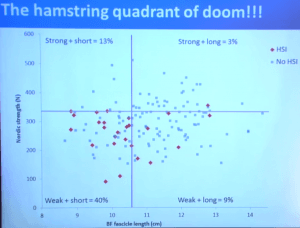
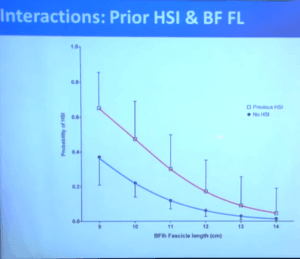
Hamstring Injuries Rehabilitation
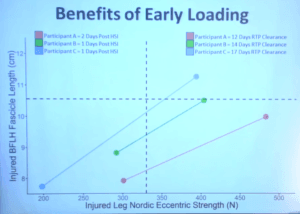
Hamstring Rehab Exercises and Stretching
 It is not uncommon to see athletes prior to a match doing a sit and reach stretch to loosen up their hamstrings. However, stretching might actually be doing more harm than good. This is because research has shown that a sit and reach stretch tensions the sciatic nerve. The sciatic nerve supplies the majority of the hamstrings.
It is not uncommon to see athletes prior to a match doing a sit and reach stretch to loosen up their hamstrings. However, stretching might actually be doing more harm than good. This is because research has shown that a sit and reach stretch tensions the sciatic nerve. The sciatic nerve supplies the majority of the hamstrings.
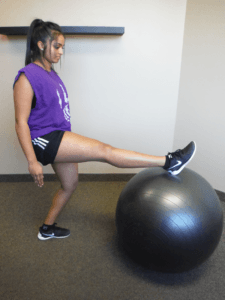
A study by Mendiguchia, J, et al 2011, found that 14-19% of hamstring injuries had no muscle damaged when investigated with MRI. The authors concluded that tension placed on the sciatic nerve (neuromeningeal structures) was the cause of the hamstring irritation. Increased tension on the sciatic nerve has also been shown to be a risk factor for future hamstring injuries.
A safer alternative to the sit and reach, is a single legged stretch with a Pilates ball. With this stretch there is no flexion of the neck or foot, so the sciatic nerve is not placed under tension. If this stretch is too difficult you can try a straight leg raise while lying on your back. The goal of this stretch is to feel a gentle pull on the back of your hamstring. This position should be held for 30 seconds and repeated 3-4 times.
It is recommended that you warm up a muscle prior to stretching. This can include placing a damp, warm cloth over the muscle or performing an active warm-up such as the ‘ABC’ drills.
What is the Best Hamstring Rehab Exercise?
A proper stretching program and active warm-up can help to loosen up the hamstrings prior to activity. However, what are the best exercises to rehab a injured (strained) hamstring.
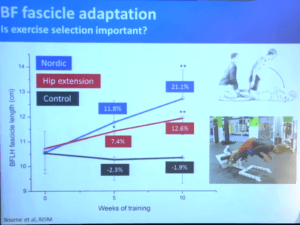
Studies have shown that cycling produces training effects in the hamstrings at shorter muscle lengths than while running. Essentially, cycling makes the hamstrings strong but short.
If you want to increase the strength and length of a muscle, eccentric exercises are your best bet. Eccentric exercises have been shown to produce training effects at longer muscle lengths [Fig.4].
Nordic Hamstring Exercise
An eccentric exercise is when a muscle is contracting and lengthening at the same time. If you imagine a bicep curl, the eccentric portion would occur while you were straighten your arm.
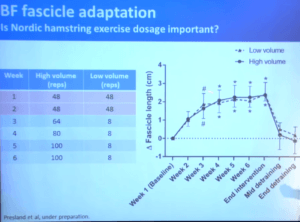
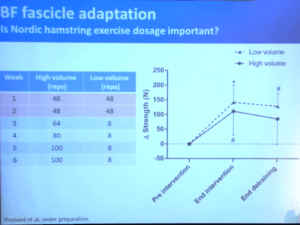
In addition, to increased muscle strength and length. NHE have also demonstrated greater activation [electrical activation (EMG)] of the hamstrings (semitendinosus and semimembranosus) compared to hip extension exercises. However, biceps femoris activation was greater with hip extension exercises.
Nordic Hamstring Exercise Program
According to Dr. Daivid Opar, the minimum viable dosage for achieving increased hamstring muscle strength and length gains with NHE is 72 reps for the first two weeks. This initial acclimatization phase is followed by an indefinite maintenance phase of 8 reps per week.
So in the initial 2 week phase, an athlete could perform 18 reps, 1 time a day, 4 times a week. Or they could perform 9 reps, 2 sets a day, 4 times a week. The authors did not state a preference. Once the 2 weeks are up, the individual must do a maintenance program. This consists of 8 reps per week indefinitely to maintain the increased hamstring muscle length.
Other Eccentric Hamstring Rehab Exercises
There might be circumstances where the NHE is too difficult to perform. Whether it is an acute injury or coinciding knee and hip issues. In these circumstances, there are other eccentric exercises that can be used.
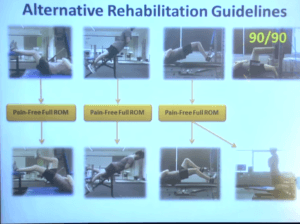
If an individual can perform the exercise in a pain-free ROM, then the difficulty should be increased. Progression for the bridge includes performing a single legged bridge, incline single legged bridge. Finally, incline single legged bridge on an unstable platform (TRX). The progression for hip extension is a single leg eccentric hip extension.
If you have any questions regarding any of the information provided, please email us at info@sportsrehabandwellness.ca.

